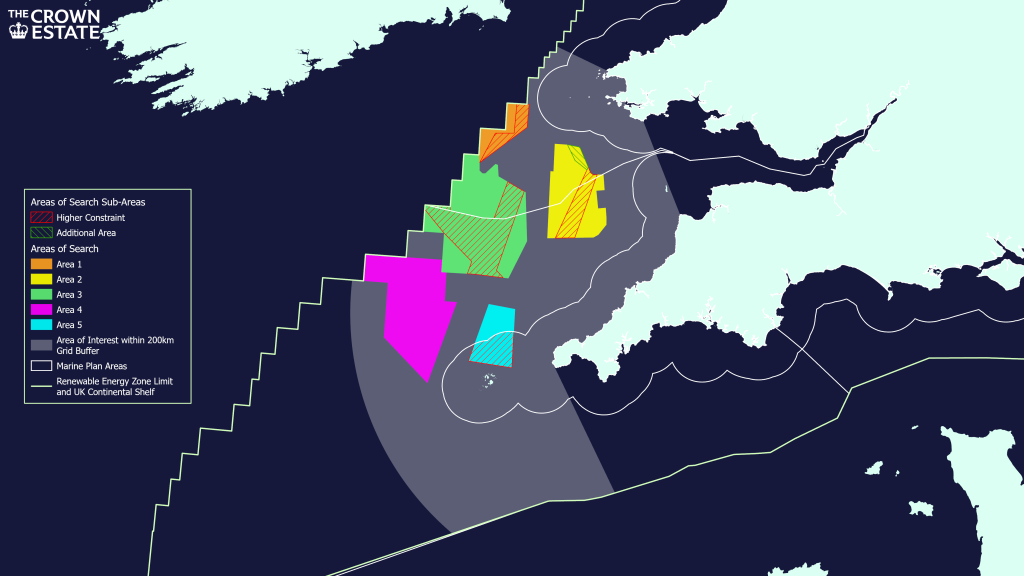The Crown Estate has identified five broad ‘Areas of Search’ for the development of floating offshore wind in the Celtic Sea. It aims to offer project areas to the market by a competitive tender in mid 2023 to deliver 4GW of floating offshore wind power by 2035.
The areas (see map below) were identified following technical analysis and extensive engagement between The Crown Estate, the UK and Welsh governments and key agencies, and specialist stakeholders. Further stakeholder and market feedback will be used to refine the Areas of Search into smaller project development areas, within which the first generation of commercial-scale floating windfarms could be built.
The Crown Estate said it will be tendering 1GW-scale projects, which may be developed in a phased approach – intended to provide further opportunities for investment in the supply chain and to facilitate co-ordination of supporting infrastructure.
Building on previous tenders, the new approach aims yo accelerate development timelines and reduce risk to developers, for example by immediately beginning the plan-level Habitats Regulation Assessment ahead of market tender and initiating offshore survey work.
The Celtic Sea leasing opportunity will also give developers the option to incorporate innovations such as green hydrogen production, using renewable energy from the offshore floating windfarms, into their projects.
The Areas of Search take account of a variety of factors, including navigation routes, fisheries activity and environmental sensitivities. The Crown Estate will continue to invite views from a range of specialist partners on key topics over the coming months.
Subject to the outcome of the plan-level HRA, The Crown Estate will in 2023 also confirm seabed rights for three separate ‘Test and Demonstration’ sites in the Celtic Sea. Experience from these smaller-scale developments will inform the rollout of larger projects in the Celtic Sea and elsewhere.
Nicola Clay, Head of New Ventures Marine at The Crown Estate, said the phased approach “gives visibility to a long-term pipeline that will support investment in the regional supply chain and infrastructure, contribute significantly to UK energy security, and help projects in the Celtic Sea reach a scale where they can become more cost-competitive.”
Huub den Rooijen, Managing Director Marine at The Crown Estate, said: “The Celtic Sea has the potential to become one of the great renewable energy basins of the world, bringing economic growth and abundant clean power. This leasing round is a first step, and we need to work together to bring technology costs down, deliver environmentally sound solutions, and respect the needs of the many other users of the marine space.”
